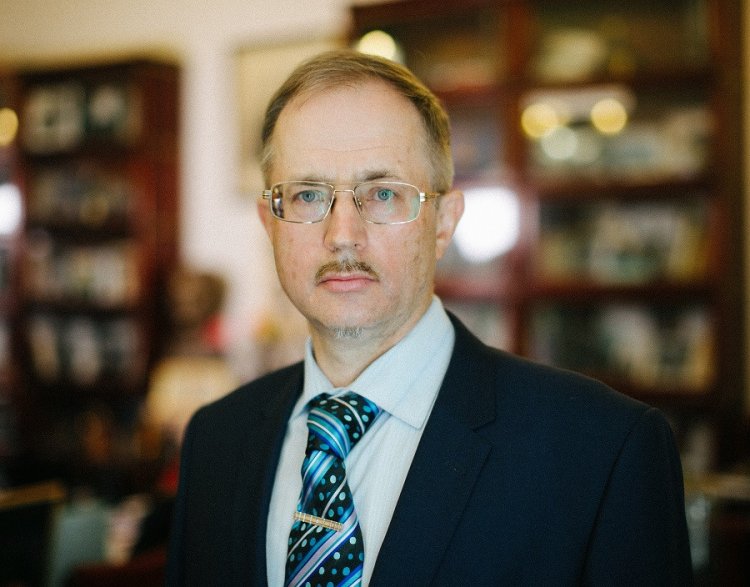About ball lightning as of possible photon source
News, 13 December 2021
On 3 December, a joint laboratory seminar was held at VBLHEP in an online format, at which M. L. Shmatov (Ioffe Physical-Technical Institute of the Russian Academy of Sciences, St. Petersburg) presented a report “Ball Lightning As a Possible Source of High-Energy Photons”.
“In general, assumptions about the emission of ionizing radiation by ball lightning, mainly high-energy photons, have been discussed for more than 90 years”, Mikhail Leonidovich began his report. “They are based on observational data and several ball lightning models”. The speaker presented his own model of ball lightning, according to which the latter has a nucleus of oscillating electrons and almost completely ionized ions. The electrons in the nucleus oscillate only in the radial direction. The nucleus is surrounded by a layer of heated air that isolates it from the rest of the atmosphere. According to the proposed model, electrons can emit electromagnetic radiation in the X-ray and gamma ranges, which corresponds to the assumption discussed in the literature about the high radiation hazard of some ball lightning.
Its analogues are a plasma cloud formed during a nuclear explosion in the atmosphere due to the Compton scattering of gamma quanta, or plasma in a trap with grid (electrostatic) confinement. The speaker showed that in his model, different parameters of ball lightning, namely lifetime, volumetric energy density, etc., have quite reasonable values; the model allows calculating the average emission rate of photons with energies of a certain range.
He also talked about the recent works of 2019-2020 but began with the forgotten ones. The ball lightning was first considered from such aspects by C. F. Wotlinger in 1928. M. T. Dmitriev is the only one who not just observed ball lightning, but also managed to take air samples after its destruction into special vessels. The speaker recalled the studies of “atmospheric electricity” by G. Rikhman and M. V. Lomonosov. In Russia today, studies of plasmoids are carried out mainly at PNPI (Gatchina). M. L. Shmatov cited the cases of observing ball lightning: in the USA when it caused fluorescence of the front door glass; in Khabarovsk M. T. Dmitriev in 1978 observed melting of about 440 kg of wet soil, while the lightning lived for about a minute. The sintered soil was studied for increased radioactivity by the Committee on Meteorites of the USSR Academy of Sciences and the Institute of Nuclear Physics of the Moscow State University. Later M. T. Dmitriev tried to simulate the event experimentally, but he failed. The energy released in the above-described case is approximately 1.1 GJ. According to the assumption of M. T. Dmitriev, ball lightning emitted radio radiation, but M. L. Shmatov believes that these are gamma quanta, and his model explains the released energy, as in another recorded case when after exposure to ball lightning, the shot in the cartridges was sintered.
In Japan, due to its geographical location, thunderclouds are low, sometimes their lower edge being at an altitude of 500 meters. Many cases of hard radiation of possible ball lightning are recorded in the Japanese experiment GROWTH (Gamma-Ray Observation of Winter Thunderclouds). The experiment began with an accidental recording of hard radiation bursts in 2006 by radiation leak sensors at the Kashiwazaki-Kariwa NPP. Low thunderclouds allowed the sensors to register not only the usual background but also the gamma radiation from the clouds. An unusual case was registered in this experiment on January 13, 2012: after a short burst, a long flux of gamma radiation was recorded, and its duration corresponded to the lifetime of ball lightning.
M. L. Shmatov took advantage of this event to test his model. It well described some characteristics of the burst and estimated the parameters of possible ball lightning, and the assumption of the possible radiation hazard of ball lightning was also confirmed.
From 2015 to 2019, 46 bursts of hard radiation were recorded by specially installed portable gamma detectors in the Japanese city of Kanazawa, where conditions were especially favourable for the occurrence of such bursts. Radiation bursts precede a lightning discharge. Then, M. L. Shmatov told about 15-min-long continuous light bursts from a thundercloud, recorded on 1 September 2019 at the Aragats Space Environmental Centre of YerPhI (Armenia), during which the flux of gamma quanta also increased.
A. Chilingarian, together with his colleagues, interpreted these data as direct optical evidence of the occurrence of a relativistic runaway electron avalanche in a thunderstorm atmosphere. However, visible light and gamma rays recorded in the present situation can also be emitted by a swarm of ball lightning, arising sequentially for 14-15 min. Mikhail Leonidovich noted that it is very difficult to distinguish ball lightning from St. Elmo’s fire, which can occur on a flying concentrator of an electric field (small pieces of ice or insects). He gave the parameters and positions of ball lightning recorded on Mount Aragats, calculated according to his model, and noted that, in this case, a group of ball lightning may well be observed. And the author is ready to test his model on new experimental data.
The report raised many interesting questions, which the author answered in detail.
